FOR: TOTAL ENERGY SERVICES INC.
TSX SYMBOL: TOT
Date issue: August 10, 2017
Time in: 5:33 PM e
Attention:
CALGARY, ALBERTA–(Marketwired – Aug. 10, 2017) – Total Energy Services Inc.
(“Total Energy” or the “Company”) (TSX:TOT) announces its consolidated
financial results for the three and six months ended June 30, 2017.
/T/
Financial Highlights
($000’s except per share data)
—————————————————————————-
Three Month Ended June 30 Six Months Ended June 30
%
2017 2016 % Change 2017 2016 Change
—————————————————————————-
Revenue $ 154,922 $ 43,893 253% $ 239,274 $ 93,849 155%
Operating Loss (13,105) (5,289) (148%) (13,346) (7,802) (71%)
EBITDA (1) 6,577 1,368 381% 14,519 5,671 156%
Cashflow 10,860 1,775 512% 18,681 6,814 174%
Net Loss (13,141) (4,203) (213%) (13,994) (6,335) (121%)
Attributable to
shareholders (11,565) (4,203) (175%) (12,418) (6,335) (96%)
Per Share Data
(Diluted)
EBITDA (1) $ 0.15 $ 0.04 275% $ 0.39 $ 0.18 117%
Cashflow $ 0.25 $ 0.06 317% $ 0.50 $ 0.22 127%
Net Loss
attributable to
shareholders $ (0.26)$ (0.14) (86%)$ (0.33)$ (0.20) (65%)
—————————————————————————-
June 30 Dec. 31 %
2017 2016 Change
—————————————————————————-
Financial
Position
Total Assets $ 1,053,302 $ 522,599 102%
Long-Term Debt
and Obligations
Under Finance
Leases
(excluding
current
portion) 256,266 46,557 450%
Working Capital
(2) 21,309 71,770 (70%)
Net Debt (3) 234,957 – n/m
Shareholders’
Equity 547,405 364,302 50%
Shares
Outstanding
(000’s)(4)
Basic 43,718 30,920 41% 37,617 30,920 22%
Diluted 43,718 30,920 41% 37,617 30,920 22%
—————————————————————————-
/T/
Notes 1 through 4 please refer to the Notes to the Financial Highlights set
forth at the end of this release.
Total Energy’s financial results for the three and six months ended June 30,
2017 include the financial results for Savanna Energy Services Corp.
(“Savanna”) from April 5, 2017 when the Company acquired control of Savanna
upon the reconstitution of the board of directors of Savanna. Negatively
impacting the Company’s financial results for the second quarter of 2017 was
approximately $4.0 million of non-recurring expenses that relate to completion
of the acquisition of Savanna and the subsequent integration and
rationalization of Savanna’s operations and a $4.5 million unrealized foreign
exchange loss included in cost of services that relates primarily to
intercompany working capital balances. Excluding these expenses, EBITDA for the
second quarter of 2017 was $15.1 million.
Finance costs for the second quarter of 2017 included $2.9 million of
non-recurring costs, notably $1.6 million of penalty interest paid on Savanna’s
debt following the change of control (including the one-percent premium paid on
the redemption of $39.6 million of Savanna’s 7% senior unsecured notes), $0.5
million of non-recurring fees associated with the establishment of Total
Energy’s $225 million revolving syndicated credit facilities (the “Credit
Facility”) and an unrealized loss on other assets of $0.8 million.
Total Energy’s Contract Drilling Services segment (“CDS”) achieved 20%
utilization during the second quarter of 2017, recording 2,021 operating days
(spud to rig release) with a fleet of 119 drilling rigs, compared to 52
operating days, or 3% utilization, during the second quarter of 2016 with a
fleet of 18 drilling rigs. Revenue per operating day for the second quarter of
2017 was $20,437. The acquisition of Savanna added 101 drilling rigs to the CDS
segment. During the second quarter of 2017, the CDS segment had 972 operating
days in Canada with a fleet of 86 rigs (13% utilization), 890 days in the
United States with a fleet of 28 rigs (37% utilization) and 159 days in
Australia with a fleet of 5 rigs (37% utilization).
The Rental and Transportation Services segment (“RTS”) achieved a utilization
rate on major rental equipment of 18% during the second quarter of 2017 as
compared to 10% during the second quarter of 2016. Segment revenue per utilized
rental piece increased 12% for the second quarter of 2017 compared to the same
period in 2016 due to a modest increase in pricing. This segment exited the
second quarter of 2017 with approximately 11,700 pieces of major rental
equipment (excluding access matting) and 125 heavy trucks as compared to 10,000
rental pieces and 112 heavy trucks at June 30, 2016. The acquisition of Savanna
added approximately 1,700 major rental pieces, four heavy trucks and a
significant inventory of small rental equipment to the RTS equipment fleet as
well as three full service branch locations in Fort MacKay, Lloydminster and
Swift Current.
Revenue in the Compression and Process Services segment (“CPS”) increased 76%
to $65.4 million for the three months ended June, 2017 compared to $37.1
million for the same period in 2016. This segment exited the second quarter of
2017 with a $149.3 million backlog of fabrication sales orders as compared to
$35.9 million at June 30, 2016 and $75.2 million at March 31, 2017. At June 30,
2017, there was 40,000 horsepower in the compression rental fleet, of which
approximately 19,000 horsepower was on rent as compared to 12,000 horsepower on
rent at June 30, 2016 and 16,500 horsepower at March 31, 2017. The gas
compression rental fleet operated at an average utilization rate of 46% during
the second quarter of 2017 as compared to 30% during the second quarter of 2016.
Total Energy’s Well Servicing segment (“WS”) was established with the
acquisition of Savanna. This segment generated $34.9 million of revenue during
the second quarter of 2017 on 34,850 billable hours, or $918 per billable hour,
with a fleet of 87 service rigs located in Canada (57 rigs), the United States
(18 rigs) and Australia (12 rigs). Service rig utilization for the three months
ended June 30, 2017 was 27% in Canada, 38% in the United States and 64% in
Australia.
Total Energy issued 15.32 million common shares from treasury in connection
with the acquisition of Savanna resulting in 46.2 million common shares
outstanding at June 30, 2017. During the second quarter, Total Energy declared
a quarterly dividend of $0.06 per share to shareholders of record on June 30,
2017. This dividend was paid on July 31, 2017. For Canadian income tax
purposes, all dividends paid by Total Energy on its common shares are
designated as “eligible dividends” unless otherwise indicated.
Outlook
Despite continuing volatility and uncertainty in global energy markets, North
American oil and natural gas drilling and completion activity levels continued
the recovery which began in the fourth quarter of 2016. While modest gains in
pricing have been achieved in North America, pricing remains low by historical
comparisons and operating margins remain challenged.
The record fabrication backlog enjoyed by the CPS segment at June 30, 2017
provides good visibility for the remainder of 2017 and into early 2018. With
the majority of the current sales backlog constituted by orders from outside of
Canada, this division continues to gain traction in the international gas
compression market. In June 2017, production commenced in a newly established
100,000 square foot gas compression fabrication facility located in Weirton,
West Virginia and subsequent to June 30, 2017 the Weirton facility received its
first direct order.
Total Energy remains focused on carefully managing its cost structure and
realizing efficiencies through the integration and rationalization of Savanna’s
operations. A significant proportion of the $5.1 million of Savanna-related
non-recurring costs incurred by Total Energy during the first half of 2017
relates to operational and overhead rationalization and the Company currently
expects that its target of $10.0 million of go-forward annualized cost savings
arising from the combination of Savanna and the Company, excluding interest
expense savings, will be achieved by year end.
The Company’s capital expenditure budget for 2017 is currently $44.8 million,
which includes a $22.0 million budget approved by the previous board of
Savanna. To June 30, 2017, $25.2 million of 2017 capital expenditures have been
made by the Company and Savanna (excluding $26.8 million related to the
acquisition of Savanna). Total Energy is currently reviewing its capital plans
for the remainder of 2017 in order to high-grade opportunities and maximize
synergies and economies of scale.
With the acquisition of Savanna on April 5, 2017, Total Energy assumed
approximately $281.3 million of Savanna debt. During the second quarter, the
Company utilized the Credit Facility to refinance $205.9 million of such debt,
thereby lowering the effective interest rate on this debt from approximately
7.16% to 3.45% as at June 30, 2017. While the applicable interest rate on the
Credit Facility is variable and tied to the Canadian prime rate of interest as
well as subject to a pricing grid based on financial ratios, the Company
expects to realize substantial interest expense savings going forward. At June
30, 2017, the Company’s total debt amounted to $326.3 million and consisted of
$192.5 million drawn on the Credit Facility (3.45% interest rate), $62.6
million of mortgage debt (3.57% weighted average interest rate), $67.5 million
of senior unsecured notes (7.0% interest rate) and $3.7 million of limited
partnership debt (5.45% interest rate).
Total Energy’s working capital position at June 30, 2017 was $21.3 million,
including $20.1 million of cash and marketable securities. Such working capital
position reflects the classification of $67.5 million of 7% notes as a current
liability given their maturity in May of 2018. In addition to the $225 million
Credit Facility, Savanna has a $5.0 million revolving line of credit that was
undrawn at June 30, 2017. Total Energy was in compliance with all debt
covenants at June 30, 2017 and able to fully draw on the remaining amounts
available under its credit facilities. The Credit Facility also provides the
Company with the option to increase such facility by $75 million subject to
certain terms and conditions including the agreement of the lenders to increase
their commitments.
Conference Call
At 9:00 a.m. (Mountain Time) on August 11, 2017 Total Energy will conduct a
conference call and webcast to discuss its second quarter financial results.
Daniel Halyk, President & Chief Executive Officer, will host the conference
call. A live webcast of the conference call will be accessible on Total’s
website at www.totalenergy.ca by selecting “Webcasts”. Persons wishing to
participate in the conference call may do so by calling (800) 806-5484 or (416)
340-2217 (passcode 7958945#). Those who are unable to listen to the call live
may listen to a recording of it on Total Energy’s website. A recording of the
conference call will also be available until September 11, 2017 by dialing
(800) 408-3053 (passcode 5805165#).
Selected Financial Information
Selected financial information relating to the three and six months ended June
30, 2017 and 2016 is attached to this news release. This information should be
read in conjunction with the interim condensed consolidated financial
statements of Total Energy and the attached notes to the interim condensed
consolidated financial statements and management’s discussion and analysis to
be issued in due course and reproduced in the Company’s 2017 second quarter
report.
/T/
Consolidated Statements of Financial Position
(in thousands of Canadian dollars)
—————————————————————————-
June 30, December 31,
2017 2016
—————————————————————————-
(unaudited) (audited)
Assets
Current assets:
Cash and cash equivalents $ 16,112 $ 15,916
Accounts receivable 119,202 47,545
Inventory 54,755 54,964
Income taxes receivable 4,486 –
Other assets 4,004 5,095
Prepaid expenses and deposits 11,545 4,029
—————————————————————————-
210,104 127,549
Property, plant and equipment 827,268 383,497
Income taxes receivable 7,070 7,070
Deferred tax asset 4,807 430
Goodwill 4,053 4,053
—————————————————————————-
$ 1,053,302 $ 522,599
—————————————————————————-
Liabilities & Shareholders’ Equity
Current liabilities:
Accounts payable and accrued liabilities $ 93,515 $ 36,755
Deferred revenue 19,004 13,573
Dividends payable 2,774 1,856
Income taxes payable – 249
Current portion of obligations under finance
leases 1,637 1,408
Current portion of long-term debt 71,865 1,938
—————————————————————————-
188,795 55,779
Long-term debt 254,478 44,962
Obligations under finance leases 1,788 1,595
Onerous lease liability 3,193 –
Deferred tax liability 57,643 55,961
Shareholders’ equity:
Share capital 291,317 88,654
Contributed surplus 3,247 7,683
Accumulated other comprehensive income (3,468) –
Non-controlling interest 1,557 –
Retained earnings 254,752 267,965
—————————————————————————-
547,405 364,302
—————————————————————————-
$ 1,053,302 $ 522,599
—————————————————————————-
Consolidated Statements of Comprehensive Loss
(in thousands of Canadian dollars except per share amounts)
(unaudited)
—————————————————————————-
Three months ended Six months ended
June 30 June 30
2017 2016 2017 2016
—————————————————————————-
Revenue $ 154,922 $ 43,893 $ 239,274 $ 93,849
Cost of services 133,528 37,202 202,243 76,856
Selling, general and
administration 14,633 5,264 22,253 11,088
Share-based compensation 255 501 484 1,010
Depreciation 19,611 6,215 27,640 12,697
—————————————————————————-
Operating loss (13,105) (5,289) (13,346) (7,802)
Gain on sale of property,
plant and equipment 71 442 225 776
Finance costs (6,646) (793) (7,243) (1,316)
—————————————————————————-
Net loss before income taxes (19,680) (5,640) (20,364) (8,342)
Current income tax expense
(recovery) (229) 81 (4,958) 396
Deferred income tax recovery (6,310) (1,518) (1,412) (2,403)
—————————————————————————-
Total income tax recovery (6,539) (1,437) (6,370) (2,007)
Net loss for the period $ (13,141) $ (4,203) $ (13,994) $ (6,335)
—————————————————————————-
Net loss attributable to:
Shareholders of the
Company $ (11,565) $ (4,203) $ (12,418) $ (6,335)
Non-controlling interest (1,576) – (1,576) –
—————————————————————————-
Loss per share
Basic and diluted $ (0.26) $ (0.14) $ (0.33) $ (0.20)
—————————————————————————-
Condensed Interim Consolidated Statements of Comprehensive Loss
(unaudited)
—————————————————————————-
Three months ended Six months ended
June 30 June 30
2017 2016 2017 2016
—————————————————————————-
Net loss for the period $ (13,141) $ (4,203) $ (13,994) $ (6,335)
Changes in fair value of
long-term investment 395 – 665 –
Realized gain on long-term
investment (665) – (665) –
Foreign currency translation
adjustment (4,775) – (4,751) –
Deferred tax effect 1,319 – 1,283 –
–
—————————————————————————-
Total other comprehensive
loss for the period (3,726) – (3,468) –
—————————————————————————-
Total comprehensive loss $ (16,867) $ (4,203) $ (17,462) $ (6,335)
—————————————————————————-
Total comprehensive loss
attributable to:
Shareholders of the
Company $ (15,291) $ (4,203) $ (15,886) $ (6,335)
Non-controlling interest (1,576) – (1,576) –
—————————————————————————-
Consolidated Statements of Cash Flows
(in thousands of Canadian dollars)
(unaudited)
—————————————————————————-
Three months ended Six months ended
June 30 June 30
2017 2016 2017 2016
—————————————————————————-
Cash provided by (used in):
Operations:
Net loss for the period $ (13,141) $ (4,203) $ (13,994) $ (6,335)
Add (deduct) items not
affecting cash:
Depreciation 19,611 6,215 27,640 12,697
Share-based compensation 255 501 484 1,010
Gain on sale of
property, plant and
equipment (71) (442) (225) (776)
Unrealized loss on other
assets 831 354 891 379
Finance costs 6,791 450 7,328 948
Realized gain on long-
term investment (665) – (665) –
Onerous leases (43) – (43) –
Unrealized loss (gain)
on foreign currencies
translation 4,511 (41) 4,696 713
Current income tax
expense (229) 81 (4,958) 396
Deferred income tax
recovery (6,310) (1,518) (1,412) (2,403)
Income taxes recovered
(paid) (680) 378 (1,061) 185
—————————————————————————-
Cashflow 10,860 1,775 18,681 6,814
Changes in non-cash
working capital items:
Accounts receivable 27,555 2,881 16,592 10,421
Inventory 1,465 7,023 5,436 8,297
Prepaid expenses and
deposits (4,998) 450 (6,166) 869
Accounts payable and
accrued liabilities (818) (2,543) 1,419 (2,221)
Deferred revenue 11,223 (2,845) 4,024 (4,753)
—————————————————————————-
Cash provided by operating
activities 45,287 6,741 39,986 19,427
Investing:
Purchase of property,
plant and equipment (10,504) (2,571) (13,432) (4,882)
Acquisitions (13,030) (5,099) (26,830) (8,689)
Cash acquired 16,167 – 16,167 –
Proceeds on sale of other
assets – 13 115 66
Proceeds on disposal of
property, plant and
equipment 111 1,916 1,028 4,221
Changes in non-cash
working capital items 550 (100) (213) (2,128)
—————————————————————————-
Cash used in investing
activities (6,706) (5,841) (23,165) (11,412)
Financing:
Advances under long-term
debt 204,000 – 204,000 –
Repayment of long-term
debt (205,419) (536) (205,898) (1,000)
Repayment of obligations
under finance leases (497) (601) (944) (1,266)
Short-term loan collected 2,997 – – –
Dividends to shareholders (2,331) (1,859) (4,187) (3,719)
Issuance of common shares 2,289 – 2,289 –
Repurchase of common
shares – (131) – (288)
Interest paid (11,421) (450) (11,885) (948)
Change in bank
indebtedness (12,087) – – –
—————————————————————————-
Cash used in financing
activities (22,469) (3,577) (16,625) (7,221)
—————————————————————————-
Change in cash and cash
equivalents 16,112 (2,677) 196 794
Cash and cash equivalents,
beginning of period – 12,346 15,916 8,875
—————————————————————————-
Cash and cash equivalents,
end of period $ 16,112 $ 9,669 $ 16,112 $ 9,669
—————————————————————————-
/T/
Segmented Information
The Company provides a variety of products and services in the oil and natural
gas industry through five reporting segments, which operate substantially in
three geographic segments. These reporting segments are Contract Drilling
Services, which includes the contracting of drilling equipment and the
provision of labour required to operate the equipment, Rentals and
Transportation Services, which includes the rental and transportation of
equipment used in drilling, completion and production operations, Compression
and Process Services, which includes the fabrication, sale, rental and
servicing of natural gas compression and oil and natural gas process equipment
and Well Servicing, which includes the contracting of service rigs and the
provision of labour required to operate the equipment. Corporate includes
activities related to the Company’s corporate and public issuer affairs.
/T/
As at and for the three months ended June 30, 2017 (unaudited)
Contract Rentals and Compression
Drilling Transportation and Process
Services Services Services
—————————————————————————-
Revenue $ 41,304 $ 13,377 $ 65,356
Cost of services 41,283 9,204 57,196
Selling, general and
administration 3,129 2,910 2,002
Share-based compensation – – –
Depreciation 7,507 4,869 1,812
—————————————————————————-
Operating income (loss) (10,615) (3,606) 4,346
Gain on sale of property, plant
and equipment – 71 –
Finance costs (97) (176) (92)
—————————————————————————-
Net income (loss) before income
taxes (10,712) (3,711) 4,254
—————————————————————————-
Goodwill – 2,514 1,539
Total assets 440,920 237,074 168,260
Total liabilities 51,704 45,440 54,456
—————————————————————————-
Capital expenditures(1) $ 4,779 $ 3,283 $ 1,418
—————————————————————————-
As at and for the three months ended June 30, 2017 (unaudited)
Well Corporate Total
Servicing
————————————————————————
Revenue $ 34,885$ – $ 154,922
Cost of services 25,845 – 133,528
Selling, general and
administration 1,580 5,012 14,633
Share-based compensation – 255 255
Depreciation 4,574 849 19,611
————————————————————————
Operating income (loss) 2,886 (6,116) (13,105)
Gain on sale of property, plant
and equipment – – 71
Finance costs – (6,281) (6,646)
————————————————————————
Net income (loss) before income
taxes 2,886 (12,397) (19,680)
————————————————————————
Goodwill – 4,053
Total assets 138,581 68,467 1,053,302
Total liabilities 9,917 344,380 505,897
————————————————————————
Capital expenditures(1) $ 333$ 691 $ 10,504
————————————————————————
—————————————————————————-
Canada United States Australia
—————————————————————————-
Revenue 89,724 35,589 29,609
Non-current assets (3) 586,699 144,493 100,129
—————————————————————————-
————————————————————————
Other Total
————————————————————————
Revenue – 154,922
Non-current assets (3) – 831,321
————————————————————————
As at and for the three months ended June 30, 2016 (unaudited)
Contract Rentals and Compression
Drilling Transportation and Process
Services Services Services
—————————————————————————-
Revenue $ 675 $ 6,091 $ 37,127
Cost of services 619 4,492 32,091
Selling, general and
administration 382 2,671 1,440
Share-based compensation – – –
Depreciation 196 4,143 1,854
—————————————————————————-
Operating income (loss) (522) (5,215) 1,742
Gain on sale of property, plant
and equipment 10 125 307
Finance income – – –
Finance costs (89) (186) (109)
—————————————————————————-
Net income (loss) before income
taxes (601) (5,276) 1,940
—————————————————————————-
Goodwill – 2,514 1,539
Total assets 110,960 226,944 155,693
Total liabilities 20,083 37,961 28,340
—————————————————————————-
Capital expenditures(2) $ 195 $ 7,185 $ 286
—————————————————————————-
As at and for the three months ended June 30, 2016 (unaudited)
Well Corporate
Servicing
Total
————————————————————————
Revenue $ -$ – $ 43,893
Cost of services – – 37,202
Selling, general and
administration – 771 5,264
Share-based compensation – 501 501
Depreciation – 22 6,215
————————————————————————
Operating income (loss) – (1,294) (5,289)
Gain on sale of property, plant
and equipment – – 442
Finance income – 11 11
Finance costs – (420) (804)
————————————————————————
Net income (loss) before income
taxes – (1,703) (5,640)
————————————————————————
Goodwill – – 4,053
Total assets – 15,752 509,349
Total liabilities – 48,961 135,345
————————————————————————
Capital expenditures(2) $ -$ 4 $ 7,670
————————————————————————
—————————————————————————-
Canada United States Australia
—————————————————————————-
Revenue 39,804 2,852 1,114
Non-current assets (3) 378,826 13,803 1,538
—————————————————————————-
————————————————————————
Other Total
————————————————————————
Revenue 123 43,893
Non-current assets (3) – 394,167
————————————————————————
As at and for the six months ended June 30, 2017 (unaudited)
As at and for the six months ended Contract Rentals and Compression
June 30, 2017 Drilling Transportation and Process
Services Services Services
—————————————————————————-
Revenue $ 48,000 $ 30,933 $ 125,456
Cost of services 46,096 19,630 110,672
Selling, general and
administration 3,650 5,960 3,788
Share-based compensation – – –
Depreciation 9,524 9,029 3,645
—————————————————————————-
Operating income (loss) (11,270) (3,686) 7,351
Gain on sale of property, plant
and equipment – 195 30
Finance costs (188) (357) (187)
—————————————————————————-
Net income (loss) before income
taxes (11,458) (3,848) 7,194
—————————————————————————-
Goodwill – 2,514 1,539
Total assets 440,920 237,074 168,260
Total liabilities 51,704 45,440 54,456
—————————————————————————-
Capital expenditures (1) $ 5,241 $ 4,701 $ 2,466
—————————————————————————-
As at and for the six months ended June 30, 2017 (unaudited)
As at and for the six months ended
June 30, 2017 Well Corporate
Servicing Total
————————————————————————
Revenue $ 34,885$ – $ 239,274
Cost of services 25,845 – 202,243
Selling, general and
administration 1,580 7,275 22,253
Share-based compensation – 484 484
Depreciation 4,574 868 27,640
————————————————————————
Operating income (loss) 2,886 (8,627) (13,346)
Gain on sale of property, plant
and equipment – – 225
Finance costs – (6,511) (7,243)
————————————————————————
Net income (loss) before income
taxes 2,886 (15,138) (20,364)
————————————————————————
Goodwill – 4,053
Total assets 138,581 68,467 1,053,302
Total liabilities 9,917 344,380 505,897
————————————————————————
Capital expenditures (1) $ 333$ 691 $ 13,432
————————————————————————
—————————————————————————-
Canada United States Australia
—————————————————————————-
Revenue 159,682 44,053 35,528
Non-current assets (3) 586,699 144,493 100,129
—————————————————————————-
————————————————————————
Other Total
————————————————————————
Revenue 11 239,274
Non-current assets (3) – 831,321
————————————————————————
As at and for the three months ended June 30, 2016 (unaudited)
Contract Rentals and Compression
As at and for the six months ended Drilling Transportation and Process
June 30, 2016 Services Services Services
—————————————————————————-
Revenue $ 3,862 $ 17,235 $ 72,752
Cost of services 2,556 11,685 62,615
Selling, general and
administration 908 5,413 3,287
Share-based compensation – – –
Depreciation 733 8,193 3,731
—————————————————————————-
Operating income (loss) (335) (8,056) 3,119
Gain on sale of property, plant
and equipment 10 180 586
Finance income – – –
Finance costs (182) (375) (220)
—————————————————————————-
Net income (loss) before income
taxes (507) (8,251) 3,485
—————————————————————————-
Goodwill – 2,514 1,539
Total assets 110,960 226,944 155,693
Total liabilities 20,083 37,961 28,340
—————————————————————————-
Capital expenditures(2) $ 245 $ 12,041 $ 1,281
—————————————————————————-
As at and for the three months ended June 30, 2016 (unaudited)
Well
As at and for the six months ended Servicing Corporate
June 30, 2016 Total
————————————————————————
Revenue $ -$ – $ 93,849
Cost of services – – 76,856
Selling, general and
administration – 1,480 11,088
Share-based compensation – 1,010 1,010
Depreciation – 40 12,697
————————————————————————
Operating income (loss) – (2,530) (7,802)
Gain on sale of property, plant
and equipment – – 776
Finance income – 11 11
Finance costs – (550) (1,327)
————————————————————————
Net income (loss) before income
taxes – (3,069) (8,342)
————————————————————————
Goodwill – – 4,053
Total assets – 15,752 509,349
Total liabilities – 48,961 135,345
————————————————————————
Capital expenditures(2) $ -$ 4 $ 13,571
————————————————————————
/T/
/T/
—————————————————————————-
Canada United States Australia
—————————————————————————-
Revenue 84,669 7,790 1,114
Non-current assets (3) 378,826 13,803 1,538
—————————————————————————-
————————————————————————
Other Total
————————————————————————
Revenue 276 93,849
Non-current assets (3) – 394,167
————————————————————————
(1) Does not include acquisition of Savanna described in note 4 to the 2017
second quarter Condensed Interim Consolidated Financial Statements.
(2) Includes acquisition of assets in January of 2016 described in note 5 to
the 2016 annual audited Consolidated Financial Statements.
(3) Includes property, plant and equipment and goodwill.
/T/
Total Energy Services Inc. is a growth oriented energy services corporation
involved in contract drilling services, rentals and transportation services,
the fabrication, sale, rental and servicing of natural gas compression and oil
and natural gas process equipment and well servicing. The common shares of
Total Energy are listed and trade on the TSX under the symbol TOT.
For further information, please visit our website at www.totalenergy.ca
/T/
Notes to the Financial Highlights
(1) EBITDA means earnings before interest, taxes, depreciation and
amortization and is equal to net loss before income taxes plus finance
costs plus depreciation. EBITDA is not a recognized measure under IFRS.
Management believes that in addition to net loss, EBITDA is useful
supplemental measure as it provides an indication of the results
generated by the Company’s primary business activities prior to
consideration of how those activities are financed, amortized or how the
results are taxed in various jurisdictions as well as the cash generated
by the Company’s primary business activities without consideration of
the timing of the monetization of non-cash working capital items.
Readers should be cautioned, however, that EBITDA should not be
construed as an alternative to net loss determined in accordance with
IFRS as an indicator of Total Energy’s performance. Total Energy’s
method of calculating EBITDA may differ from other organizations and,
accordingly, EBITDA may not be comparable to measures used by other
organizations.
(2) Working capital equals current assets minus current liabilities.
(3) Net Debt equals long-term debt plus obligations under finance leases
plus current liabilities minus current assets.
(4) Basic and diluted shares outstanding reflect the weighted average number
of common shares outstanding for the periods. See note 9 to the
Company’s Interim Consolidated Financial Statements for the three and
six months ended June 30, 2017.
/T/
Certain statements contained in this press release, including statements which
may contain words such as “could”, “should”, “expect”, “believe”, “will” and
similar expressions and statements relating to matters that are not historical
facts are forward-looking statements. Forward-looking statements are based upon
the opinions and expectations of management of Total Energy as at the effective
date of such statements and, in some cases, information supplied by third
parties. Although Total Energy believes the expectations reflected in such
forward-looking statements are based upon reasonable assumptions and that
information received from third parties is reliable, it can give no assurance
that those expectations will prove to have been correct.
In particular, this press release contains forward-looking statements
concerning industry activity levels, expectations regarding Total Energy’s
market share and future compression and process production activity, Total
Energy’s expectations of future interest rates and its corresponding ability to
realize substantial interest expense savings, expectations as to the Company’s
ability to realize cost efficiencies and synergies arising from the acquisition
of Savanna as well as other expected benefits of the acquisition. Such
forward-looking statements are based on a number of assumptions and factors
including fluctuations in the market for oil and natural gas and related
products and services, political and economic conditions, central bank interest
rate policy, the demand for products and services provided by Total Energy,
Total Energy’s ability to attract and retain key personnel and other factors.
Such forward-looking statements involve known and unknown risks and
uncertainties which may cause the actual results, performances or achievements
of Total Energy to be materially different from any future results,
performances or achievements expressed or implied by such forward-looking
statements. Reference should be made to Total Energy’s most recently filed
Annual Information Form and other public disclosures (available at
www.sedar.com) for a discussion of such risks and uncertainties.
The TSX has neither approved nor disapproved of the information contained
herein.
– END RELEASE – 10/08/2017
For further information:
Total Energy Services Inc.
Daniel Halyk
President & Chief Executive Officer
(403) 216-3921
OR
Total Energy Services Inc.
Yuliya Gorbach
Vice-President Finance and Chief Financial Officer
(403) 216-3920
OR
Total Energy Services Inc.
investorrelations@totalenergy.ca
www.totalenergy.ca
COMPANY:
FOR: TOTAL ENERGY SERVICES INC.
TSX SYMBOL: TOT
INDUSTRY: Energy and Utilities – Equipment, Energy and Utilities –
Oil and Gas
RELEASE ID: 20170810CC0081
Press Release from Marketwired 1-866-736-3779
All press releases are written by the client and have NO affiliation with the news copy written by The Canadian Press. Any questions that arise due to the content or information provided in the press release should be directed to the company/organization
issuing the release, not to The Canadian Press.





 CDN NEWS |
CDN NEWS |  US NEWS
US NEWS 



































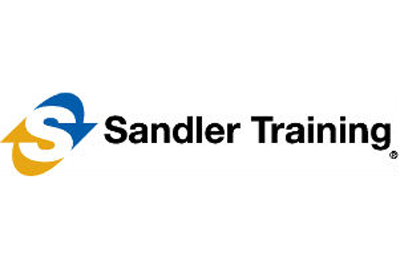
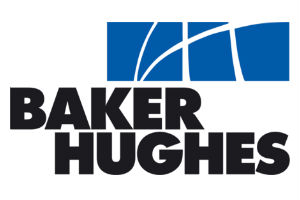


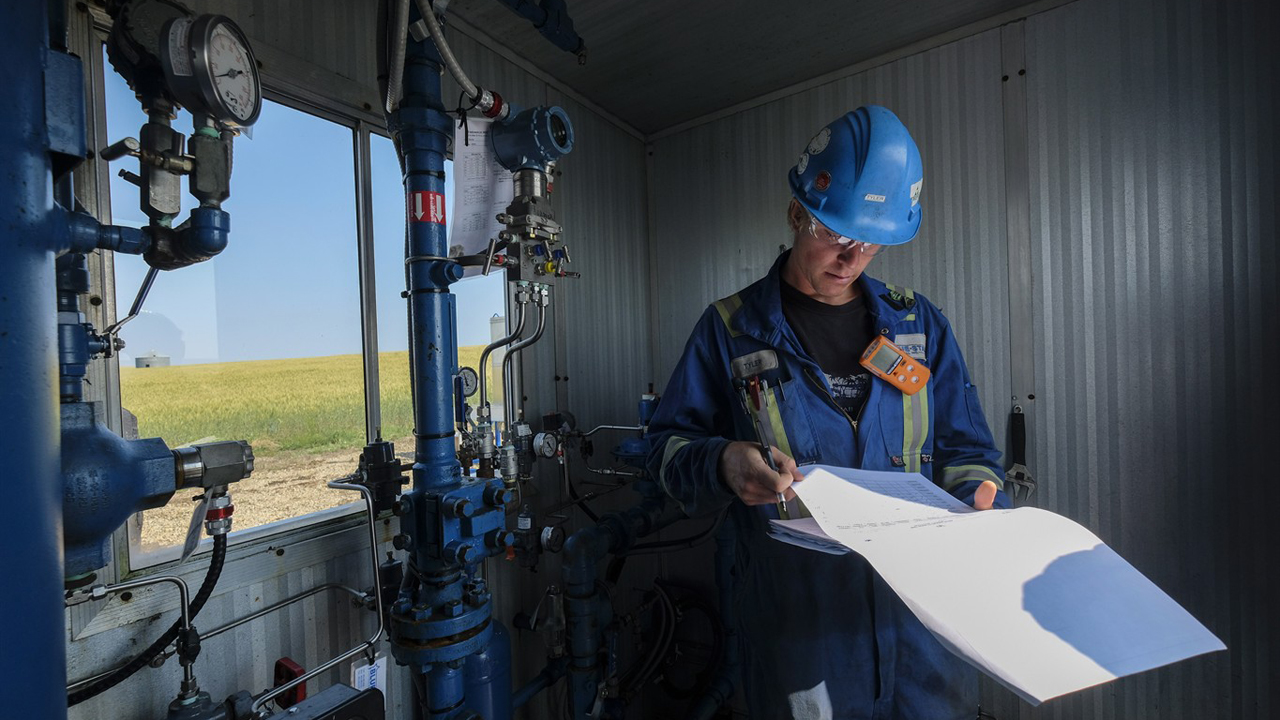














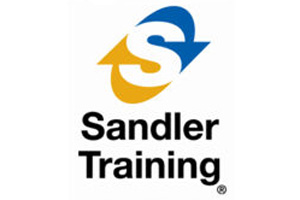







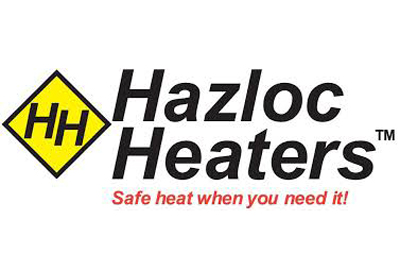







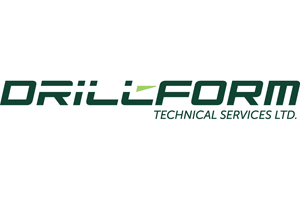






























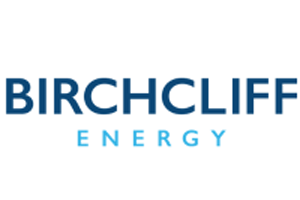
















Canada’s Advantage as the World’s Demand for Plastic Continues to Grow